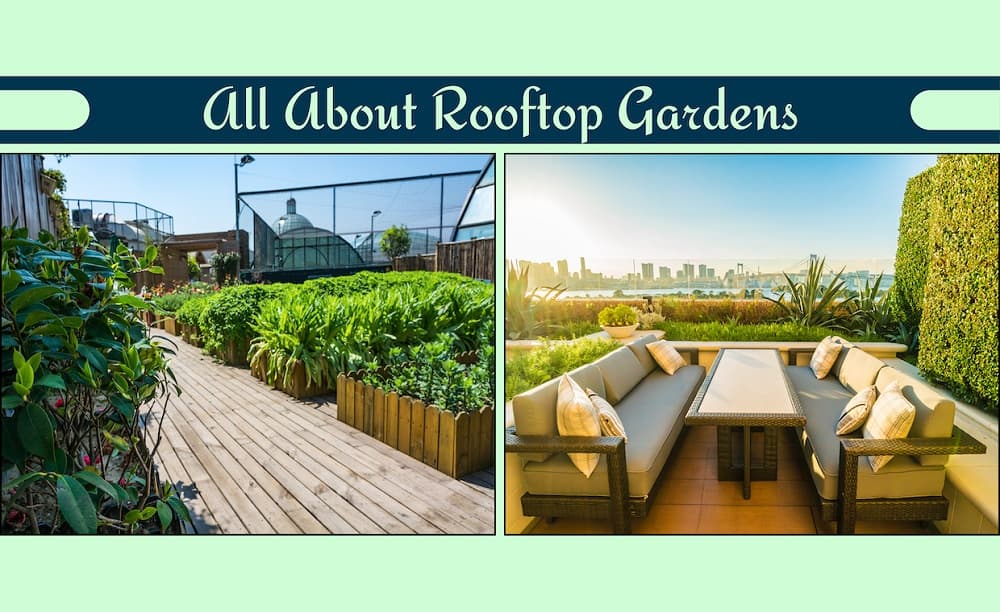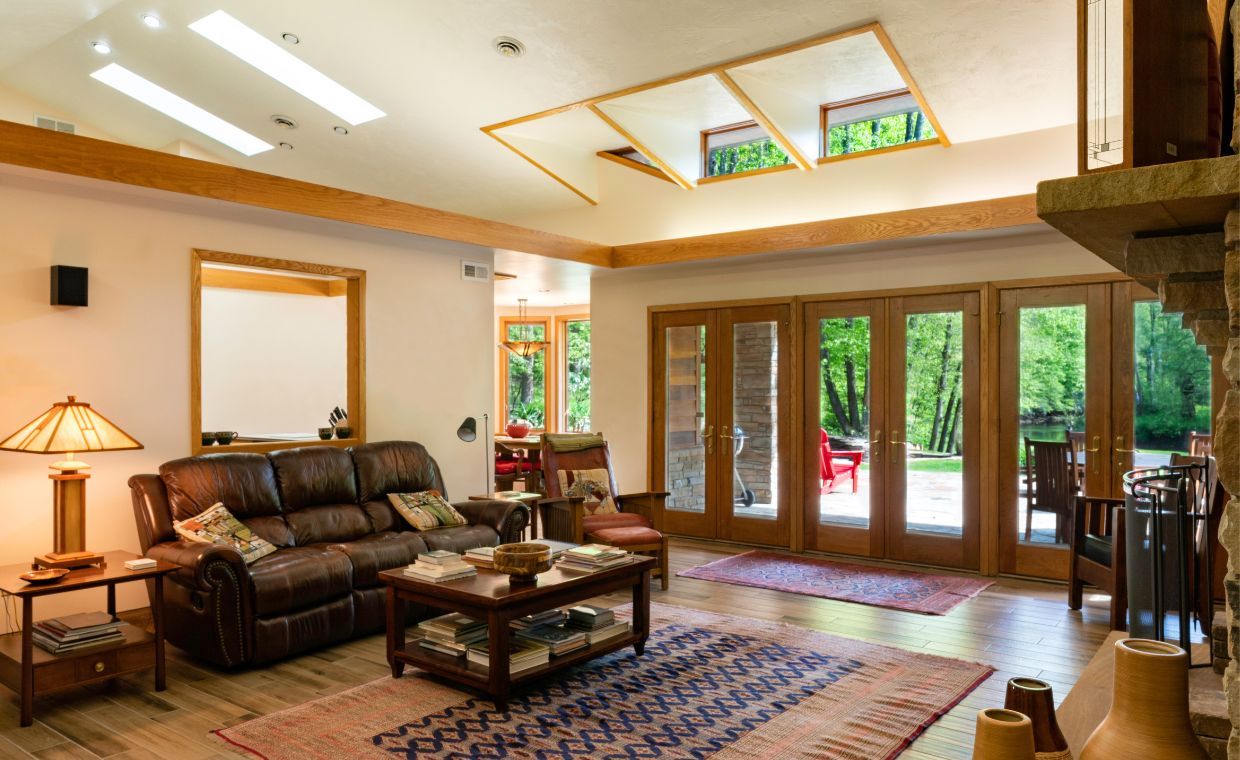
Developing a rooftop garden involves perseverance, hard work, and careful plant selection. Learn everything there is to know about rooftop gardens, including the finest plants to utilise and the many benefits and drawbacks. Cities environmental conditions are degrading by the minute. Green landscapes are removed to make space for concrete structures. Cities and municipalities will struggle to minimise harmful emissions and mitigate the urban heat island effect if there aren’t enough green spaces. The need to reduce the negative effects of development has motivated new-generation builders, planners, and urban planners to design solutions for preserving the highest quality of the environment. One approach they offer is to create a rooftop garden or garden area.
What Exactly is Rooftop Garden?

A rooftop garden is a group of container plants kept on the rooftop of a flat building, usually an apartment building, by home gardeners or landscapers. Vegetable plants and decorative shrubs are examples of plants. Planting a few plants in terracotta pots might be as simple as planting a few plants in terracotta pots or as complex as designing garden beds with automatic plant watering systems.
Plant Varieties for Rooftop Gardens
Roof weather conditions might vary considerably. For example, some roofs can attain temperatures of up to 170 degrees Fahrenheit, while others are subjected to violent winds. Consider the weather conditions on your roof while selecting plants for your rooftop container garden, and choose your plants accordingly. Here are some examples of plants that could grow on your rooftop:
01. Drought-tolerant Plants

Most rooftop gardens subject to direct sunlight and wind require deep, frequent watering to thrive. If you don’t want to or are unable to construct a drip system or rain barrel cistern, you may grow bored of dragging a watering can to your roof to water the plants on a daily basis. Planting drought-tolerant plants, such as desert succulents like the snow rose, sage, butterfly weeds, and evergreen trees and shrubs, will help make your rooftop garden low-maintenance and easy to manage.
02. Shade-tolerant Plants

Shadow-tolerant plants are an excellent choice if surrounding buildings or trees shade your roof for most of the day. Hostas and lettuces are two common shadow-tolerant plants.
03. Sun-loving Plants

Sun-loving plants are the most natural choice for many roofs that receive full sun (at least six hours of direct sunshine per day). Consider full-sun plants like tomato plants and strawberries, tiny trees like Japanese maple trees, and flowers like marigolds, wildflowers, and coneflowers if your roof gets a lot of suns.
04. Wind-tolerant Plants

Because there are no other buildings or trees to block the wind, many roof gardens face higher wind conditions than ground-level gardens. Consider low-growing shrubs and groundcovers like decorative grasses, hydrangeas, and honeysuckle bushes if your roof gets a lot of wind.
The Benefits and Drawbacks of a Rooftop Garden

A. Benefits
- One of the key benefits of a rooftop garden is that it allows people to have outdoor plants at home regardless of their backyard situation. As a result, rooftop gardens are a popular urban garden option for apartment and condo dwellers.
- Rooftop gardens are more likely to get full sun than on-the-ground gardens or houseplants since trees or other structures do not shade them. Gardeners can choose from a greater variety of plants, including vegetable plants and sun-loving flowers, thanks to the abundant sunlight.
- Pest-resistant: Many on-the-ground gardens can be targets for weeds and local wildlife, such as deer and rabbits, making it difficult to grow certain plants. Rooftop gardens keep plants out of reach of animals and many weeds, minimising the kind of pests that might harm their growth and lowering the need for weeding.
- Rooftop gardens are a terrific way to add visual interest to a flat roof space, transforming it into a more pleasant outdoor place with vegetation for relaxing or partying. Decking, a fire pit, a pergola, or colourful chairs can all be added to enhance your rooftop garden design.
B. Drawbacks
- The most significant disadvantage of rooftop gardening is the need for a sustainable watering system. Rooftop gardens are often thirsty (because of strong heat and winds), but they are more difficult to water than other gardens since they are farther from fixtures and water lines and therefore require a little more engineering to put up drip irrigation systems or a cistern.
- Rooftop gardens suffer more severe weather than other gardens, mainly high winds and hot temperatures; therefore it’s critical to select plants that are exceptionally robust for roofs that routinely experience adverse weather.
- Rooftop gardens must be in containers or raised garden beds since they are elevated above the ground, which limits the range of plants gardeners can utilise. In addition, container gardens might be more expensive than growing directly in the ground.
- Weight limitations: Roofs can only support a certain amount of added weight. When designing a rooftop garden, ensure your roof can support the weight of the containers, soil, and water cistern, if you intend to build one.
How to Begin a Rooftop Garden in 8 Simple Steps
01. Check Your Local Construction Codes

Check with your local building codes before purchasing any plants to ensure you can plant on the roof. Check with the building owners or condo associations to determine if plants are permitted in the common area. If you reside in a house, check with the homeowners’ organisation or local construction codes to determine if there are any height or aesthetic restrictions.
02. Choose Your Plants

Consider the weather conditions on your roof while selecting plants for your rooftop garden, and choose your plants accordingly. For example, use sun- and heat-loving plants if your roof is full of sunlight or painted black; if your roof has few windbreaks, choose low-to-the-ground plants and bottom-heavy containers.
03. Containers Can be Chosen or Built

Rooftop gardens are infinitely customizable—for planters, you can use simple five-gallon buckets (with drainage holes) or make your own unique raised beds for a more polished look. Whatever container you pick, ensure it has proper drainage to prevent your plants’ roots from sitting in damp or soggy soil, which can lead to root rot. Also, consider the roof’s weight constraints, as plastic or wooden containers are lighter than concrete or stone.
04. Set Up Windbreaks

If your area gets a lot of wind, you should put up windbreaks around your plants to keep them from blowing over on your roof. A trellis or a perimeter wall will help to maintain strong winds at bay while also anchoring your plants in the soil.
05. Make the Topsoil Ready

Because rooftop gardens cannot access ground soil, you must purchase and transport it to your rooftop containers. However, most plants flourish in well-draining, organic-rich soil, such as potting soil mixed with organic compost.
06. Plant your Choices

After you’ve prepared your pots, dig holes in them and plant your chosen plants. After that, water thoroughly to settle the soil and anchor the plants.
07. Purchase Necessary Equipments

Purchase all necessary equipments which can be used for making a beautiful rooftop gardens like decor pots, soil patter, soil water dipper, pot trays etc.
08. Water The Plants As Needed

A watering can is the simplest way to irrigate a rooftop garden. More comprehensive watering systems can be installed for larger rooftop plants or to avoid descending the stairs every morning with a watering bucket. Setting up a rain barrel or cistern to gather rainwater in a watering can is a common choice. A drip system connected to a roof-level water fixture can also be installed.
Key Takeaway
Planting within cities is now widely recognised as improving air quality and reducing total heat. Still, a shortage of space and high land prices make increasing the number of parks and natural areas problematic. This is where rooftop gardens come into play, which is why they have grown in popularity in recent years, particularly in more extensive and established cities. Rooftop gardens are visually appealing, have a beautiful view, and offer a convenient and quick way to enjoy a quiet refuge in the city’s centre. But, aside from their aesthetic appeal, rooftop gardens provide many other significant advantages.
Also, check out these interesting articles related to gardening.
Gardening Hacks in an Apartment
House Plants … Add a Wow Factor to Your Indoors!
Image Courtesy: Image 5






























